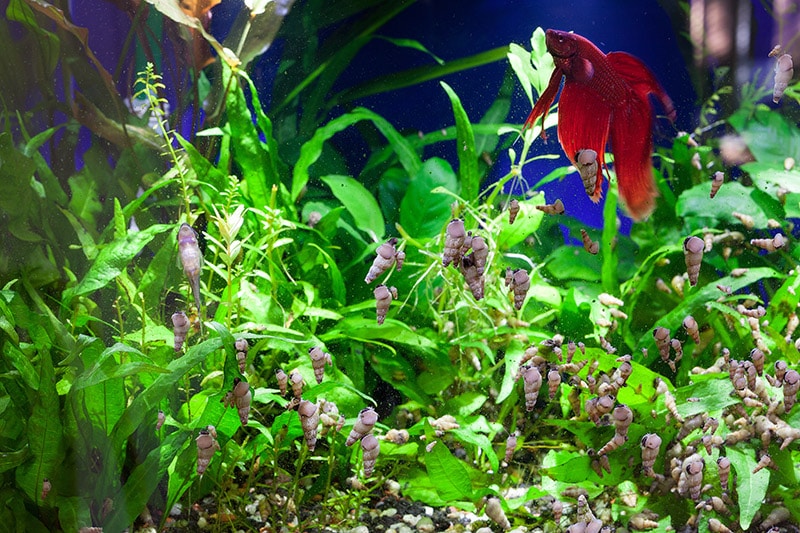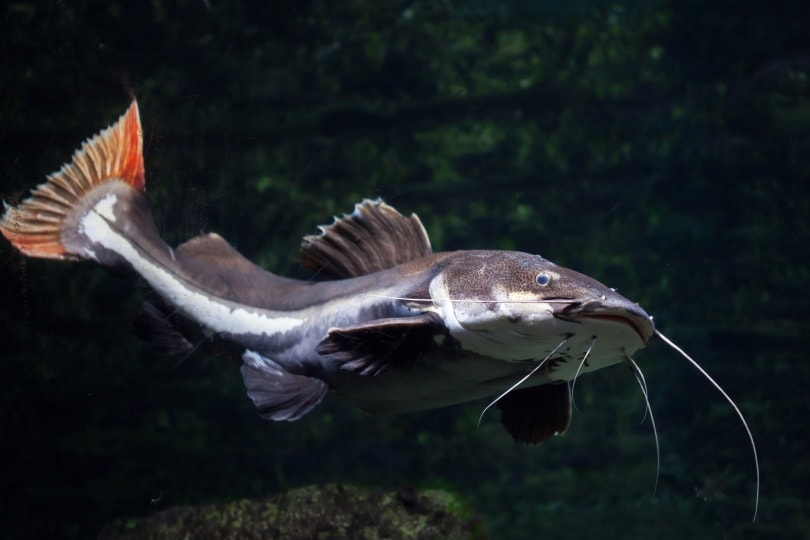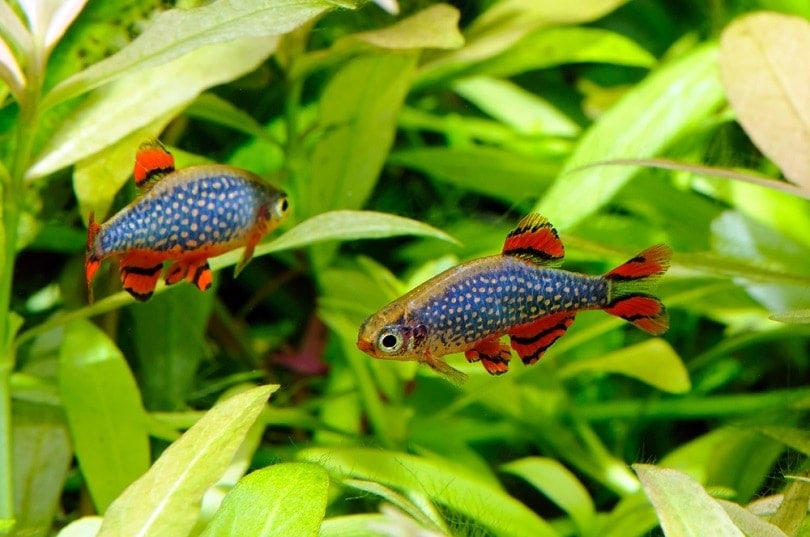Can You Eat Koi Fish? Recommendations & Precautions
Updated on
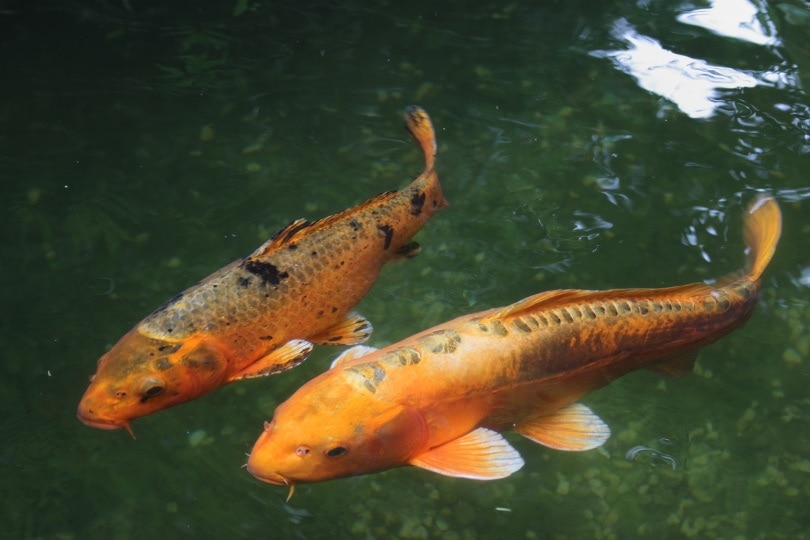
Koi fish are large, ornamental fish that are popular across the world for ponds. You can spot them anywhere from backyards to zoos. They’re popular because of their hardy nature and beautiful appearance, both of which make them perfect for pond life. However, the sheer size of these fish may have led you to wonder if people eat these fish. After all, many animals that we consider to be pets or otherwise inedible are eaten in various parts of the world. Why would Koi fish be any different? Koi fish are edible and while they aren’t widely consumed anywhere in the world. Let’s get into detail.

Do People Eat Koi Fish?
The simplest answer to this question lies in understanding what Koi fish are. Koi fish are specially bred carp, which are consumed across the world. Koi may not be top-quality food fish since they are bred for looks and not taste, but they do grow to around 3 feet in length, so they’re no small fry either. In fact, some specially bred varieties of Koi can reach almost 5 feet in length.
Koi fish don’t just reach long lengths, either. They are hefty fish, routinely weighing in at 35 pounds! That’s likely much larger than most fish you’d catch during a freshwater fishing trip, making a single full-grown Koi large enough to feed a family with plenty of leftovers.

Is it a Good Idea to Eat Koi Fish?
The answer to this question isn’t as straight-forward because it depends on several factors. Fish that are raised specifically as food for humans are raised under closely controlled circumstances, including limits on the medications and other chemicals the fish can be exposed to prior to slaughter. They are also, ideally, raised in water that is very clean and well-filtered, and they are fed a specific diet.
The Koi fish living in the pond in your backyard are unlikely to have been kept in the same type of controlled environment that your food fish have been kept in. You treat the pond with water treatments, you give the fish antibiotics when they are sick, you feed them but also allow them to scavenge for food in the pond. All of these are things that can impact the safety and taste of the fish.

Is Koi Farming a Sustainable Food Source?
It can be! Koi are hardy enough to make them relatively easy to raise, and they are not difficult to breed. They grow quickly, although they aren’t going to weigh 35 pounds at 1 year of age. The potential for sustainability is definitely there, but the idea of farming Koi as a food source does run into the same problems that other fish farming operations encounter, like creating environmental pollution and increasing the risk of diseases spreading from the farmed fish to wild fish in the local environment.
Also, keep in mind that Koi have been carefully bred for hundreds of years to achieve the art-like fish we know today. Using fish that have been bred for aesthetics as a food source not only could lead to low quality meat, but it also defeats the purpose of the intent of breeding Koi. There are non-ornamental varieties of carp that would be better suited to be farmed as food fish. However, carp, in general, are known for a slightly muddy taste to their meat if the meat is not handled just right after slaughter.
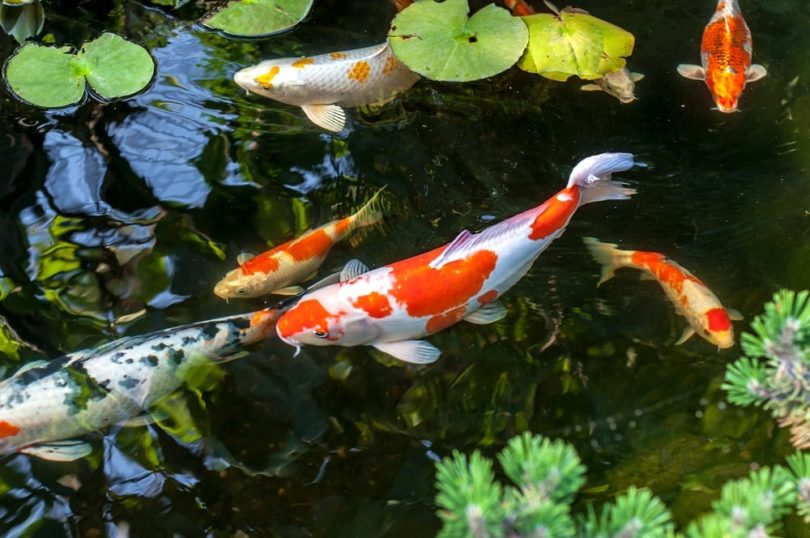

In Conclusion
If you saw Koi fish on the menu at your local restaurants, would you give it a try? It certainly could be an interesting experience! Koi fish are edible and while they aren’t widely consumed anywhere in the world, they do have some potential as a sustainable food source. However, when it comes down to it, there are other fish that are better suited to being food than the intricate and ornate Koi fish.
See Also:
Featured Image Credit: Else Siegel, Pixabay
